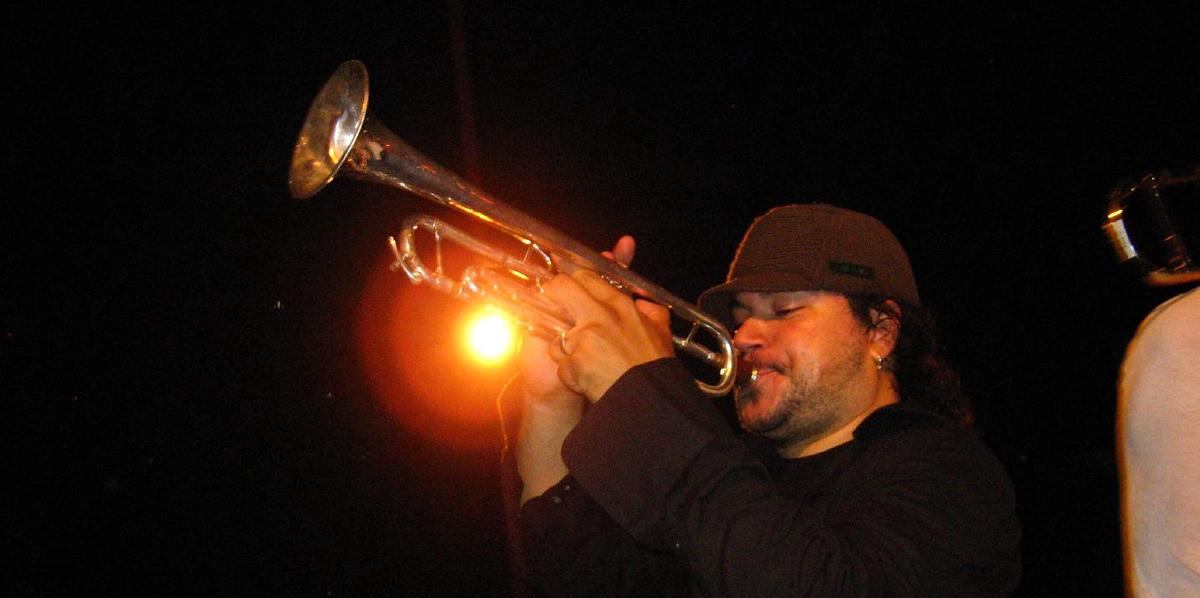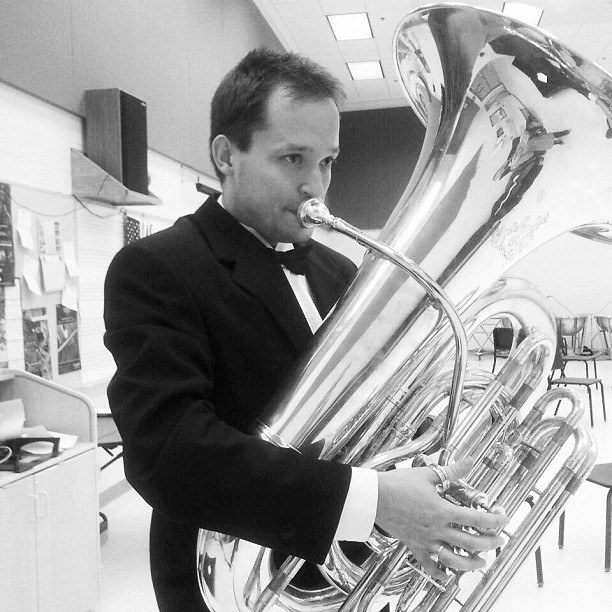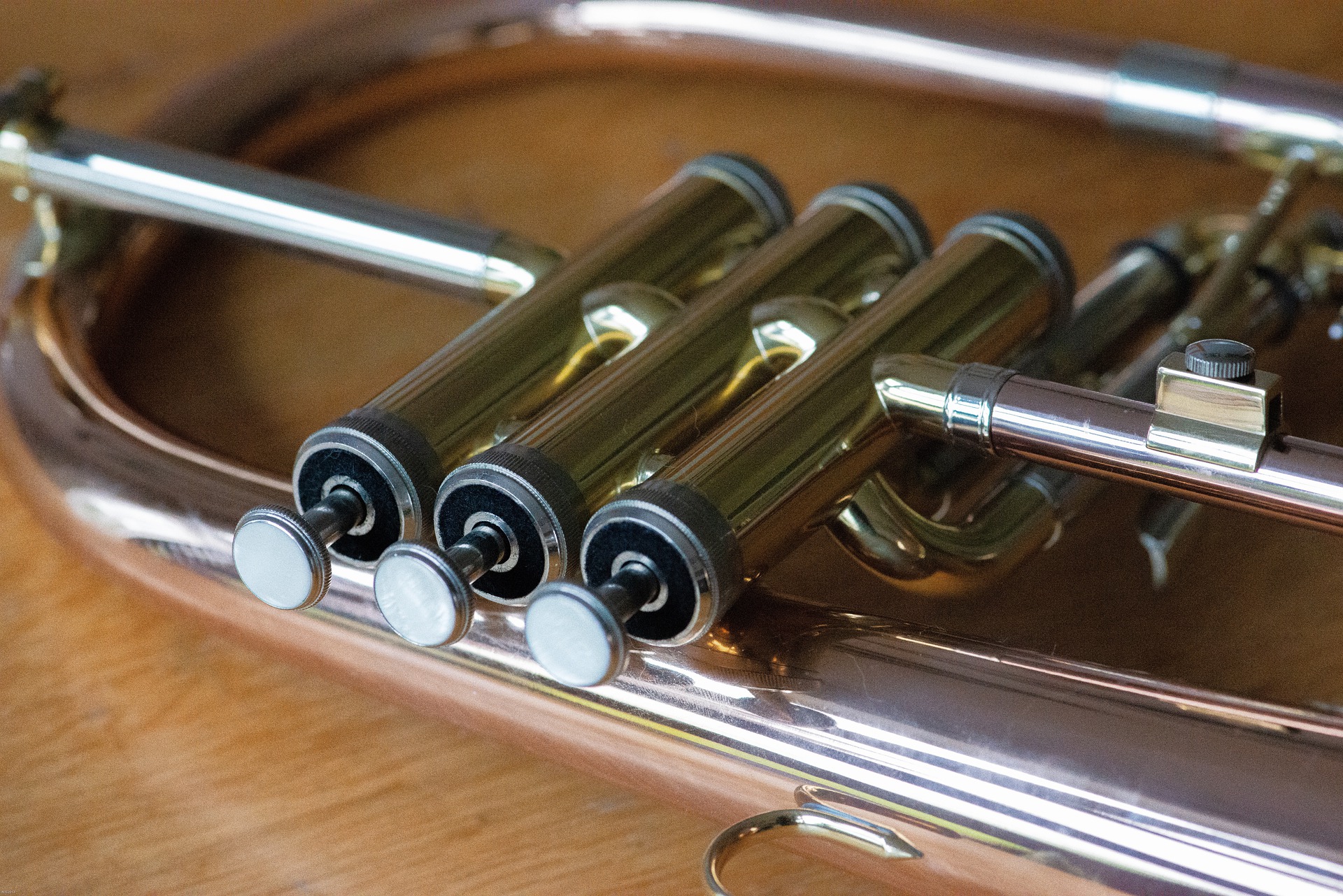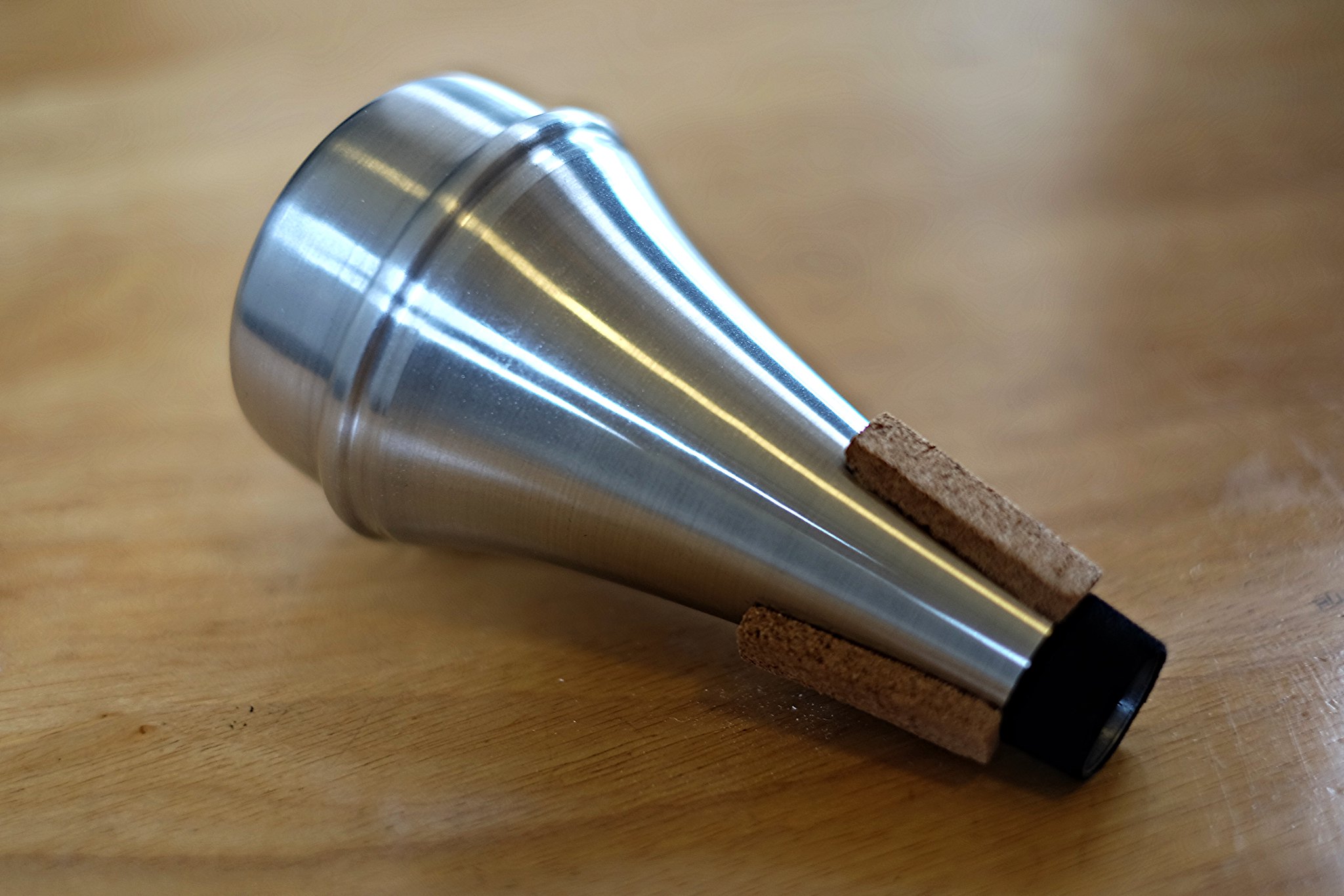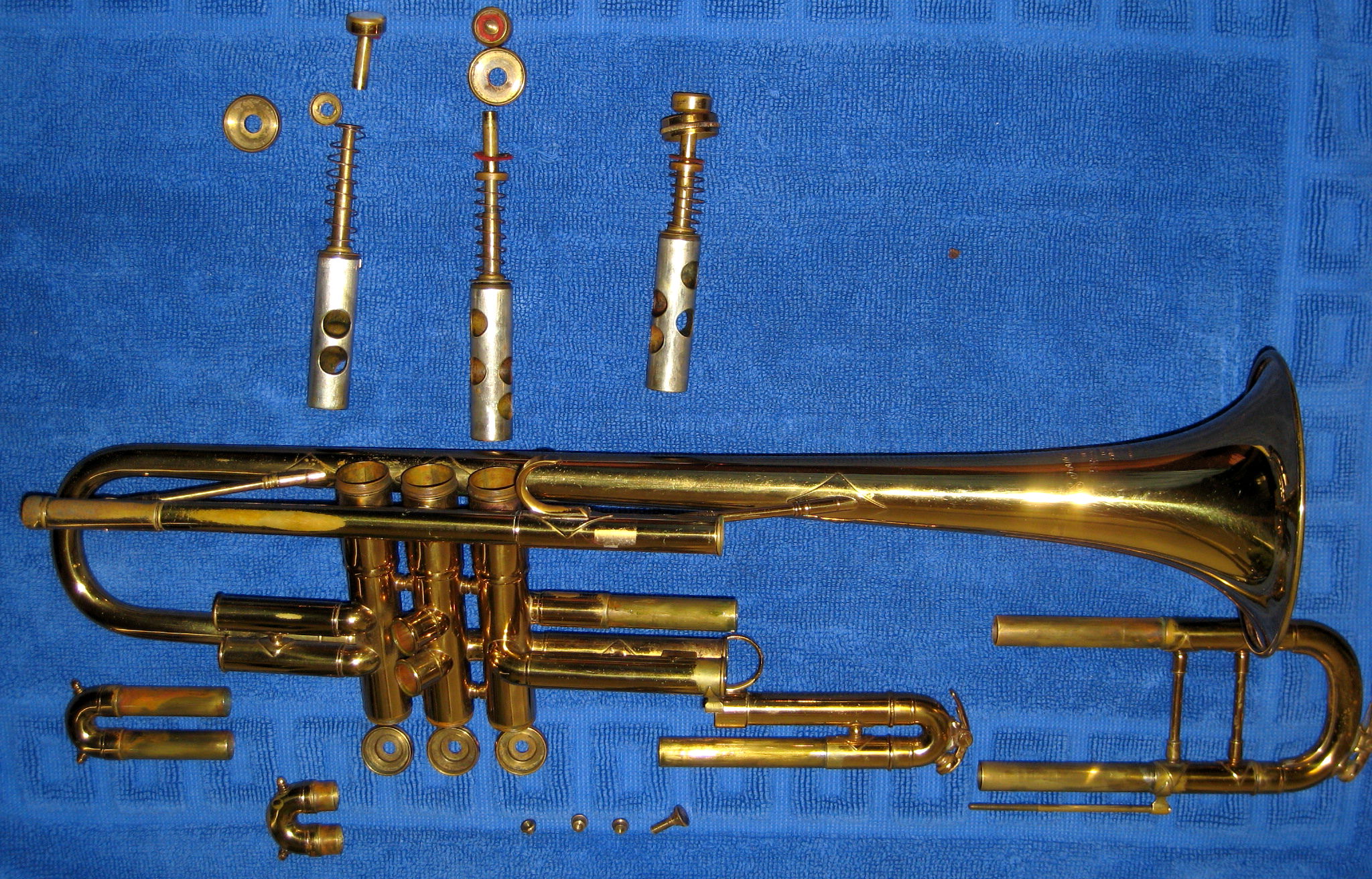One of the main reasons many of us started playing trumpet in the first place was due to an experience where we heard the sound of a glorious trumpet screaming over the top of a jazz band. Or maybe you heard a beautiful piccolo trumpet recording in an orchestra or brass quintet.
For me personally, I remember seeing the Airmen of Note performing some Gordon Goodwin charts and within the same year I saw my first DCI competition. I was absolutely hooked on the sound of the trumpet in the upper stratosphere!
Ironically, I went on to switch to tuba as my primary instrument and started to explore the polar opposite side of the brass range. But I continued to play trumpet in jazz and carried on through my band directing days where I teach many high school trumpet players.
Alright, so we've established our mutual love for the upper trumpet register. Now comes the work. How do we start to build our trumpet range?
How To Play High Notes On Trumpet?
First, let's agree that there is not one universally-agreed upon technique for playing high notes on the trumpet. Try as we may to boil down the technique into a single set of exercises, or the authoritative text on trumpet range, trumpet professors and professionals have varying perspectives on technique.
One thing I have often heard from middle school band directors trying to get their young players to squeak out upper notes in jazz is to "blow harder."
While well-intentioned in trying to motivate trumpet players, I think this can do more damage than good, as it introduces unnecessary tension into the process. As a young trumpet player myself, this caused me to push my mouthpiece harder against my lips, focusing on mouthpiece pressure as the primary path to a higher range.
That was a hard habit to break, and a painful one too!
I tend to prefer a more logical discussion about the mechanics of it, so let's dig in!
The Physical Characteristics
The Air
When we talk about airstream, we usually focus the discussion around the volume and the speed of the air. When we play high notes on trumpet, we want to focus on a steady, fast stream of air.
If you haven't thought too much about the speed of your air, think about the difference between blowing on a bowl of hot soup vs. blowing out birthday candles. If you blew on the soup with fast air speed, you'd probably end up splashing it all over yourself! Likewise, if you try to blow out candles and the air is too slow, you'll only make the flame flicker rather than extinguishing it completely.
The volume on the other hand really isn't a concern when it comes to playing trumpet high notes. In fact, it really doesn't require a huge amount of air at all; it simply needs to be expelled quickly.
The Tongue
As brass players, we often limit the discussion of the tongue to the articulation of the note. But the tongue actually has an important role to play as we move throughout our trumpet range.
It might be a little exaggerated, but try feeling the three syllables "Tah", "Tu", and "Tee" as you blow air against your hand.
With the Tah sound, our oral cavity is larger because our tongue is placed lower in our mouths. That means the larger shape of our mouth consequently needs a larger volume of air, and naturally it takes longer to push the air out of our mouth. Tah is perfect for lower range, and really helps open up the sound. But that's the opposite of what we're trying to achieve overall as we ascend in range.
Tu, as you can imagine, starts to center and direct our airstream. This is ideal for the middle range of the trumpet.
Tee helps us in arching the tongue and increases the speed of the air. Practice going back and forth throughout the motions from Tah Tu Tee, and back again Tee Tu Tah.
The Lips
I think most trumpet players would agree that some additional pressure is needed in the upper register, but not from pushing the horn too hard against your face. Instead, try thinking of squeezing a stress ball, with your fingers pushing towards each other. Likewise, your lips need to be tighter. Specifically, your lower lip needs to be stretched tighter, which is sometimes aided by a smaller mouthpiece.
Developing With Trumpet Range Exercises
-
Practice playing quietly. Playing high notes is all about control and not force. Being able to play a sustained, quiet high pitch without wavering in tone will help support you as you grow your sound. High does not equal loud (despite what your marching band friends may tell you!)
-
Spend as much time resting as you do practicing in the upper register. It can be tempting to continue to wail on your high notes, but your body needs time to rest and regroup, especially to let the blood continue to circulate in your lips.
-
In order to play high, you need to establish good tone quality in your lower register as well. Practicing trumpet long tones in the middle of the trumpet range and in the low trumpet range (and pedals) allows you to focus on tone quality, intonation, and air consistency, all of which are essential in playing high as well.
-
While trumpet scales aren't the magic solution to all playing, using scalar snippets to transition from comfortable parts of the range incrementally into the upper register. Playing high notes on trumpet isn't just about popping out a random note; it's the ability to move up to and around that part of the instrument.
-
Likewise, take a melody that you love, and start to transpose it up a half step at a time. Your brain already knows the melody, so it becomes a more natural process to play higher notes in context of the melody.
-
Lip slurs of all sorts work well as the emphasis is put on your air to move through the notes in the upper range. I find that slurs through ascending triads is a helpful pattern, elongating the last of the three notes.
-
Listen and play with recordings. Again, it's all about the context in which you are playing. You'll begin to notice tendencies of the pros and be able to emulate their sound in your playing over time.
-
If you're looking for method books that help with your embouchure and range-building, I highly recommend (Flow Studies by Vincent Cichowicz)
Other Tips
Building your range isn't a party trick. I hear it tossed around like a couple of bros at the gym bragging about how much they lift. "Hey man, I can play an E!" "Oh yeah? I just popped out a G." Higher, faster, louder... we naturally want to make it something competitive.
When you initially try to develop your trumpet range, it may be tempting to have a certain note in mind that you want to be able to play. But just plucking out a note from thin air really doesn't have any musical context. Being able to play the note with proper style, tone, and consistency is something that is built up over time.
And speaking of time, make sure you give yourself plenty of it! Too often I hear young trumpet players who make comments like "I need to be able to hit x note for this piece we're playing next week in jazz band." Unfortunately, there's no "get-rich-quick" scheme or screamer trumpet mouthpiece that magically turns yourself into the next Maynard, so make sure that you set realistic expectations and give yourself plenty of runway when it comes to building your trumpet embouchure.
And, while it's great to have a regular and consistent practice routine, range-specific exercises don't need to be an every day thing. Sprinkle them into your practice routine every other day, or every third day.
